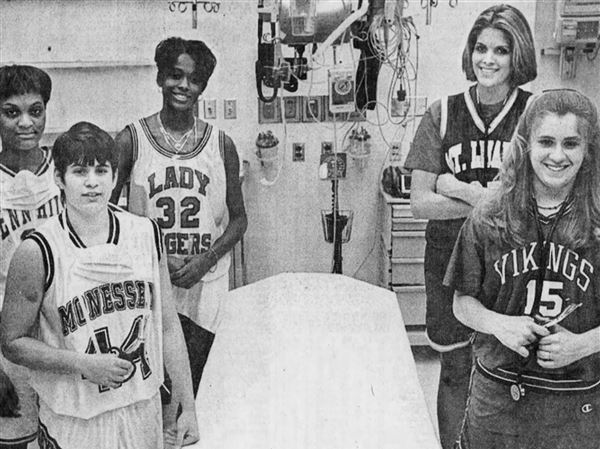Pennsylvania’s biggest wildlife problem continues to grow. Last week the state Department of Agriculture announced that three deer in Blair and Lancaster counties were confirmed to have contracted chronic wasting disease.
Two of the white-tailed deer, fenced in a small deer farm, were the first captive deer to test positive for CWD in Blair County. That farm has been placed under quarantine. The other CWD-infected deer was owned by a deer farm at which two other deer had previously tested positive for the disease. The entire herd has been euthanized.
Department of Agriculture records show that 49 captive deer have tested positive for chronic wasting disease in Pennsylvania. Since CWD was confirmed in the state in 2012, 128 free-ranging deer have tested positive, according to the state Game Commission. The number balooned since 2016, when 25 deer were confirmed to have had CWD.
In a statement the Game Commission said that to control CWD among free-ranging deer, the agency has strengthened rules regarding the importation of deer parts, and expanded disease management areas in which special rules apply to hunters and residents.
Bryan Burhans, Game Commission executive director, said the spread of the disease beyond established borders was particularly troubling.
“The escalating number of CWD detections and the sudden emergence of this disease in new parts of the state should put all Pennsylvanians on guard to the threat CWD poses and the disease’s potential to have damaging impacts on Pennsylvania’s deer and deer-hunting tradition.”
Most of the free-ranging deer with positive diagnoses were found within or near the boundary of Disease Management Area 2 (DMA 2) in south central Pennsylvania. Three were located within or near DMA 3 in northwestern Pennsylvania. Those DMAs have been recently expanded. A new disease management area, DMA 4, was established this year when CWD was confirmed in a captive deer in Lancaster County. The original DMA was dismantled when testing showed no trace of CWD. And with the creation earlier this year of DMA 4, which was established after CWD was detected at a captive deer farm in Lancaster County, In all, DMAs contain more than 5,895 square miles within Pennsylvania.
“It’s important for each of us to take this threat seriously and do all we can to slow the spread of the disease where it exists,” said Burhans. “By discontinuing feeding of deer and curbing other behavior that induces deer to congregate, and potentially spread disease, and by responsibly disposing of high-risk deer parts and not transporting them outside DMAs, those living within DMAs can do their part in helping fight CWD.”
Following the disclosure of new CWD cases in Blair and Lancaster counties, the state House Game and Fisheries Committee, chaired by state Rep. Keith Gillespie, R-York, held a public hearing to discuss chronic wasting disease and its threat to Pennsylvania’s cervid population.
Nationwide, nearly half of America’s states have confirmed cases of chronic wasting disease. Caused by prions, oddly altered proteins, CWD spreads rapidly among elk, moose and deer of all kinds. It is untreatable, always fatal and, so far, virtually impossible to eliminate from the environment. The Centers for Disease Control and Prevention has reported that humans can not contract CWD and no one has been diagnosed with the disease, but a recent study by Canadian researchers suggested that the prions could get into a person's brain if meat from an infected animal was eaten.
Individual states and the U.S. Fish and Wildlife Service are working to slow the spread of CWD and federal bills are awaiting votes in the House and Senate that would fund state and reservational control efforts, compensate deer farms for chronic wasting disease-related loses and invest in CWD research.
Hatchery discussion
Despite the efforts of state legislators to remove John Arway from his position as executive director of the Fish and Boat Commission, after he threatened to close hatcheries if the agency didn’t come up with additional funding, Fish and Boat’s Hatcheries and Fisheries Committee met last week to hold initial discussions on how to close two state-run trout hatcheries and one warm-water hatchery. Last year a committee of the state House of Representatives stopped a Senate bill that would have increased funding for the Fish and Boat Commission by raising license fees. The Board of Commissioners ordered Arway to find new funding or trim $2 million from the agency’s budget, a task he said was possible with the closure of the hatcheries.
Bass season opens
The harvest season for largemouth, smallmouth and spotted bass opened Saturday. The statewide inland harvest limit is 12 inches minimum, six combined species daily. On Lake Erie and tributaries the limit is 15 inches and four combined species. On Pymatuning Reservoir the harvesting of bass is legal year round, the minimum size is 12 inches and the daily keep is five. On Pine Township Park Pond, Lower Burrell Pond Park and Glade Run Lake bass fishing is catch and release only. Hopewell Township Park Lake: 15-inch minimum, two daily. A 15-inch minimum size and daily limit of four combined species is required on waters managed under the Big Bass Program including (Allegheny County) Upper, Middle and Lower Deer Lakes; (Armstrong) Keystone Power Dam; (Beaver) Bradys Run Lake; (Butler) Lake Arthur; (Fayette) Mill Run Reservoir, Bridgeport Reservoir; (Indiana) Yellow Creek Lake; (Mercer) Shenango River Lake; (Somerset) Quemahoning Reservoir, Lake Somerset is drained for dam repair; (Venango) Justus Lake; (Venango, Clarion) Kahle Lake; (Washington) Cross Creek Lake, Peters Township Lake No. 2; (Westmoreland) Bridgeport Reservoir, Indian Lake, Keystone Lake at Keystone State Park), Mammoth Lake, Northmoreland Lake, Twin Lakes upper and lower.
First Published: June 15, 2018, 6:36 p.m.
















